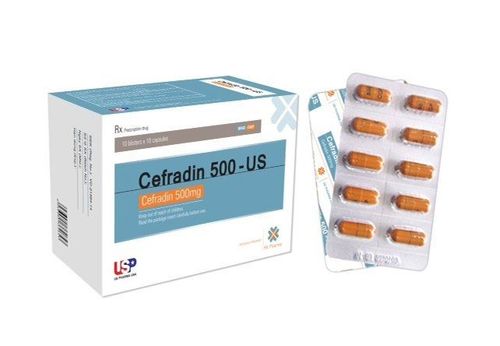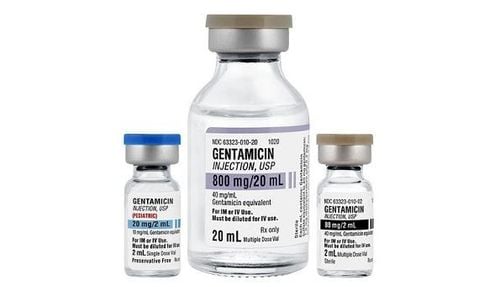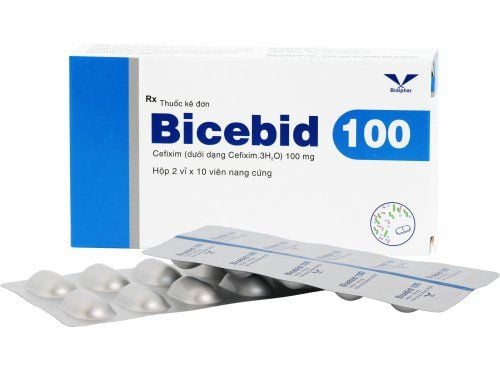This is an automatically translated article.
Piperazam drug is prepared in the form of lyophilized powder for injection, with the main ingredients being Piperacillin sodium and Tazobactam sodium. The drug is indicated in the prevention and treatment of certain infectious diseases.
1. What is Piperazam?
1 Piperazam 4.5g vial contains 4g Piperacillin sodium and 0.5g Tazobactam sodium. Piperacillin is a broad-spectrum penicillin ureido-antibiotic that is bactericidal to gram-negative and gram-positive aerobic and anaerobic bacteria by inhibiting bacterial cell wall synthesis. Piperacillin is susceptible to attenuation by beta lactamases. Piperacillin resistance may be due to beta lactamase, chromosomal changes will gradually reduce the effect of Piperacillin. Tazobactam is a beta-lactam antibiotic. Tazobactam is a highly modified penicillin and sulfone. People combine Tazobactam with Piperacillin, the broad-spectrum beta-lactam antibiotic in Piperacillin/Tazobactam to treat infections caused by Pseudomonas aeruginosa. Tazobactam will extend the therapeutic spectrum of Piperazam by making it effective against beta-lactamase-expressing microorganisms.
Indications for use of Piperazam in the following cases:
Treatment of severe infections, bacteremia, urinary tract infections complicated by susceptible bacteria, especially Pseudomonas; Combination of Piperacillin with aminoglycosides in the treatment of systemic infections caused by Pseudomonas or patients with neutropenia; Prevention of infection in uterine and abdominal surgery. Contraindicated to use Piperazam drug with the following groups of subjects:
People with hypersensitivity to the penicillin group or to cephalosporins; Children under 2 months old.
2. How to use and dose of Piperazam
2.1. How to use The drug is administered by parenteral route. Some notes when using the drug:
Piperacillin/Tazobactam should not be mixed with other drugs in the same syringe or in the same bottle of infusion because the compatibility has not been determined. When Piperacillin/Tazobactam is used concurrently with other drugs that need to be injected at different places or at different times; Due to chemical instability, Piperacillin/Tazobactam should not be mixed with sodium bicarbonate solution. Piperacillin/Tazobactam should not be added to blood products or albumin hydrolysis products; The drug solution after reconstitution can be stable for 12 hours at room temperature and 24 hours if stored in the refrigerator (temperature 2 - 8°C). 2.2. Dosage People over 12 years: Usual dose: 4.5g every 8 hours. If the infection is severe, increase the dose according to the doctor's prescription; Prevention of infection in surgery: Use 1 vial immediately before surgery. Then, every 6-8 hours, use 1 vial within 24 hours of surgery (minimum 2 more doses are recommended); Children from 2 months to 12 years: The usual dose is 200-300mg/kg body weight every 24 hours, the doses should be divided 4-6 hours apart; Children under 2 months of age: Do not use the drug; Elderly: Use the same dose as adults; Patients with renal impairment: Adjust dosage according to the degree of renal impairment, as directed by the doctor. Duration of treatment: In cases of acute infection, Piperacillin/Tazobactam should be continued for at least 48 hours after the patient's fever is gone or clinical symptoms have resolved.
3. Piperazam side effects
During the use of Piperazam, patients may experience some side effects such as: allergic skin rash, increased eosinophils, fever, nausea, diarrhea, thrombophlebitis, When experiencing side effects of the drug, patients should promptly notify the doctor for the fastest intervention support.
4. Precautions when using Piperazam
Before and during the use of Piperazam, the patient should note:
Before starting treatment with Piperacillin/Tazobactam, the patient should inform the doctor in detail about his or her allergy history to penicillin, cephalosporin or other drugs; Piperazam should be used with caution in patients with infectious mononucleosis or renal insufficiency; In case of severe and prolonged diarrhea while taking Piperazam, the possibility of antibiotic-associated pseudomembranous enteritis should be considered. Patients can be treated with metronidazole ; Attention should be paid to the amount of sodium in the therapeutic doses of Piperazam in patients with sodium and water accumulation, especially in those receiving high doses of the drug; Precautions for dosage and administration of Piperazam in children; A risk of bleeding may occur in patients treated with beta-lactam antibiotics, especially those with renal impairment. If the patient develops antibiotic-associated bleeding, Piperazam should be discontinued and appropriate treatment instituted; Piperazam should not be used during pregnancy and lactation. If medication is required, the consent and monitoring of the doctor is required.
5. Piperazam drug interactions
Some drug interactions of Piperazam include:
Drug interactions with Cefoxitin; Drug interactions with Metronidazole; Piperazam has a synergistic effect with aminoglycosides but requires separate injection; Coagulation parameters should be monitored when Piperazam is used concurrently with high-dose heparin, oral anticoagulants or drugs that affect the coagulation system, platelet function; Caution should be exercised when Piperazam is co-administered with vecuronium or similar neuromuscular blocking agents; Piperazam may decrease the excretion of methotrexate when taken concomitantly. To ensure safety when using Piperazam, patients should strictly follow all instructions and orders of their doctor. This ensures a good treatment effect and greatly reduces the risk of unpredictable side effects.













